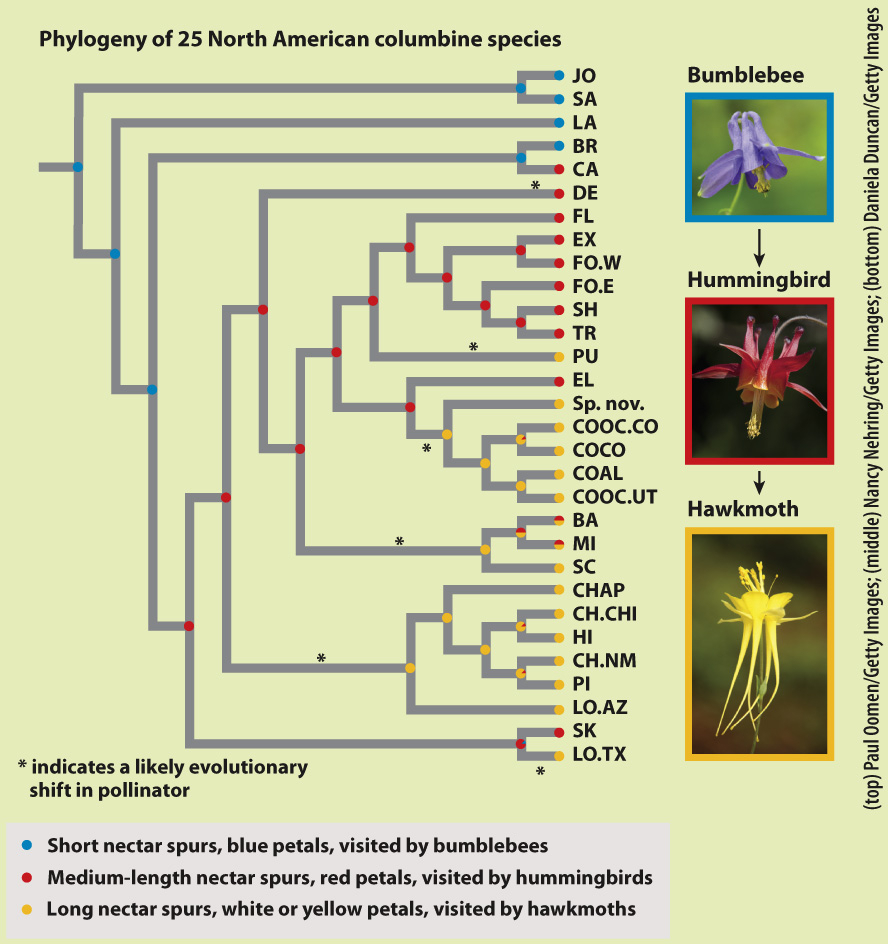HOW DO WE KNOW?
FIG. 30.16
Are pollinator shifts associated with the formation of new species?
BACKGROUND Columbines (Aquilegia species) are diverse and have visually striking flowers. Columbine flowers have nectar spurs, which are modified petals that form tubular outgrowths. Blue flowers with short nectar spurs are pollinated by bumblebees, red flowers with medium nectar spurs are pollinated by hummingbirds, and white or yellow flowers with long nectar spurs are pollinated by hawkmoths. The size of the nectar spur corresponds to the length of the tongue of the pollinator.
HYPOTHESIS The recent radiation of columbines corresponds with shifts from short-
METHOD Researchers mapped changes in flower color and nectar spur length onto a phylogenetic tree of columbines. To do this, they assigned each of 25 species examined to one of three groups based on length of nectar spur, flower color, and most common pollinator (bumblebees, hummingbirds, or hawkmoths). The group is indicated by the color circle at the tip of each branch in the phylogenetic tree in the figure. The researchers then did a statistical analysis that suggested the most likely pollinator type at each node representing an ancestor, also indicated by color circles in the figure. They used this information to infer the history of pollinator shifts during the radiation of this group.

RESULTS Within the recent radiation of columbines, there are multiple instances of shifts from a shorter-
CONCLUSION The evolution of floral diversity and increasing nectar-
FOLLOW-
SOURCES Whittall, J. B., and S. A. Hodges. 2007. “Pollinator Shifts Drive Increasingly Long Nectar Spurs in Columbine Flowers.” Nature 447:706–